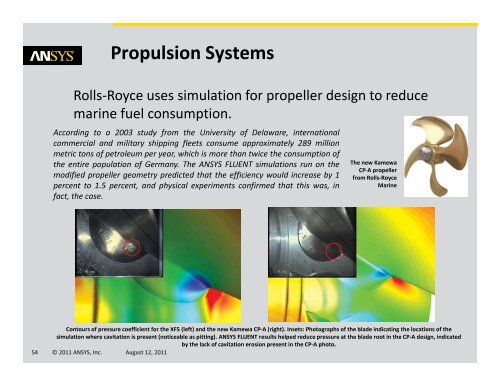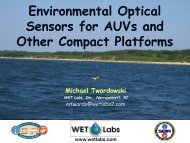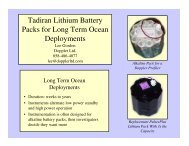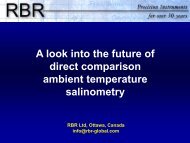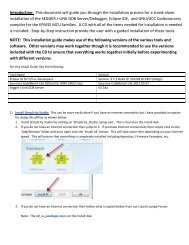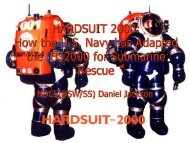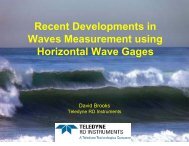ANSYS Applications in Ocean Science and Engineering
ANSYS Applications in Ocean Science and Engineering
ANSYS Applications in Ocean Science and Engineering
You also want an ePaper? Increase the reach of your titles
YUMPU automatically turns print PDFs into web optimized ePapers that Google loves.
Propulsion Systems<br />
Rolls-Royce uses simulation for propeller design to reduce<br />
mar<strong>in</strong>e fuel consumption.<br />
Accord<strong>in</strong>g to a 2003 study from the University of Delaware, <strong>in</strong>ternational<br />
commercial <strong>and</strong> military shipp<strong>in</strong>g fleets consume approximately 289 million<br />
metric tons of petroleum per year, which is more than twice the consumption of<br />
the entire population of Germany. The <strong>ANSYS</strong> FLUENT simulations run on the<br />
modified propeller geometry predicted that the efficiency would <strong>in</strong>crease by 1<br />
percent to 1.5 percent, <strong>and</strong> physical experiments confirmed that this was, <strong>in</strong><br />
fact, the case.<br />
The new Kamewa<br />
CP-A propeller<br />
from Rolls-Royce<br />
Mar<strong>in</strong>e<br />
54<br />
Contours of pressure coefficient for the XF5 (left) <strong>and</strong> the new Kamewa CP-A (right). Insets: Photographs of the blade <strong>in</strong>dicat<strong>in</strong>g the locations of the<br />
simulation where cavitation is present (noticeable as pitt<strong>in</strong>g). <strong>ANSYS</strong> FLUENT results helped reduce pressure at the blade root <strong>in</strong> the CP-A design, <strong>in</strong>dicated<br />
by the lack of cavitation erosion present <strong>in</strong> the CP-A photo.<br />
© 2011 <strong>ANSYS</strong>, Inc. August 12, 2011


